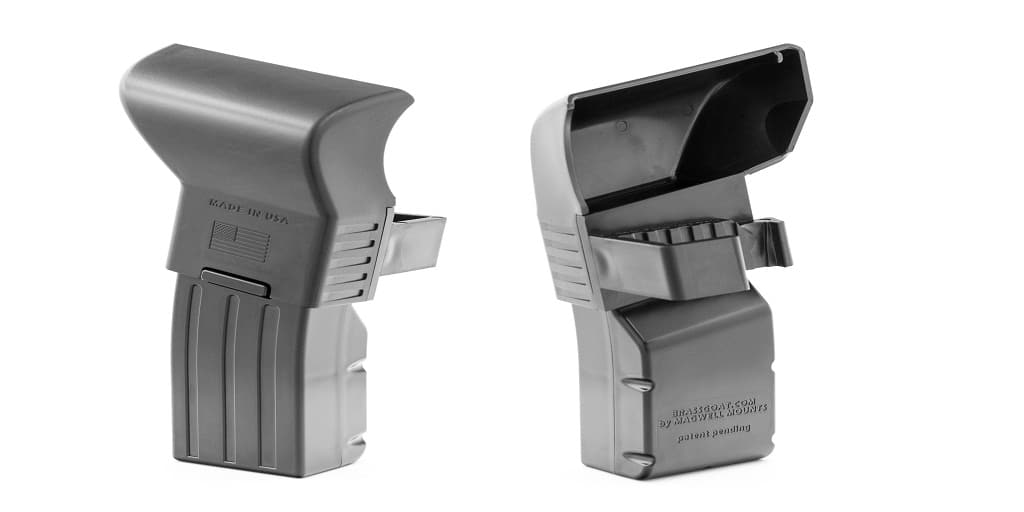An AR brass catcher is a vital AR 15 accessory that can be used to keep your shooting area clear, to help you carry in and out, and to keep your brass off the ground. For reloaders, this is a huge bonus.
Now, you know the importance of keeping your rifle clean. A dirty trigger can get gritty; a dirty BCG won’t cycle as fluidly as a clean one, interrupting bolt function; dirty gas systems can cripple rifle action, and so on and so forth.
Plus, if fouling continues to accumulate and you never clean it, it can accelerate corrosion or mix with oils to form tar that is horrific to remove. A clean rifle is a functioning rifle.
Now, back to the brass catcher. You have two basic options. Mesh bag brass catchers with a wire frame holding them rigid, and solid material brass catchers like the Brass Goat, which is made of ABS resin and quickly attaches to the magwell of mil-spec lower receivers.
You should clean these too, just like any other part of your rifle. Here’s why.
The Importance of Clean Brass (And a Clean AR Brass Catcher)
The main purpose of keeping an AR brass catcher clean is not because its functionality will suffer when it gets dirty. A dirty mesh catcher will still allow brass to enter the bag without disruption, as will a dirty piece of resin.
The purpose of keeping your brass catcher clean is to catch empty cartridges and keep them clean, especially if you reload.
Cleaning and tumbling brass is just part and parcel of reloading, and reloaders don’t do it for their health.
For one, a dirty cartridge can scratch the inside of a rifle’s chamber, inhibiting feeding and extraction. But that’s just the tip of the iceberg.
A cartridge that’s dirty on the inside can adversely affect load performance, decreasing the reliability of ignition as well as accuracy.
You’ll still need to clean your brass if you reload, regardless of whether you clean your brass catcher. It’s just that it’s a good idea to keep your brass catcher clean anyway. That, combined with keeping your cartridges off the ground, will do some of the cleaning work for you.
Avoid the Use of Alcohol or Solvents
Mesh bag brass catchers are difficult to clean because they have so many small crevices and it’s hard to reach them all. You’ll probably do your best with some hot water and soap.
As for a hard, molded ABS resin AR brass catcher like the Brass Goat, cleaning can be much easier. All you need to clean one of these brass catchers (and its hopper) clean is a warm rag and some soap and water. Simply wipe down the inside and outside until fouling stops coming off, and you’re set.
One thing to note is that it’s not advisable to use alcohol or gun cleaning solvents on these brass catchers.
Solvents like Hoppe’s No. 9, may be effective at dissolving polymers. We’re not going to test it to find out, and neither should you.
As for cleaning with rubbing alcohol, well, it’s effective at removing fouling. That’s true, but it’s also effective at hastening decay to plastic polymers. It won’t destroy them in one go, but over time will dry them out, causing cracking, warping, and deterioration. Stick with soap and water.
Where Can I Learn More?
Interested in learning more about tips for maintenance of your Brass Goat? Interested in getting a Brass Goat and solving some of the woes of a mesh bag brass catcher? Visit BrassGoat.com or contact their customer service team at Admin@MagwellMounts.com or by phone at 1-833-MAGWELL.
For more information about Brass Catcher Please visit: Magwell Mounts, LLC.





